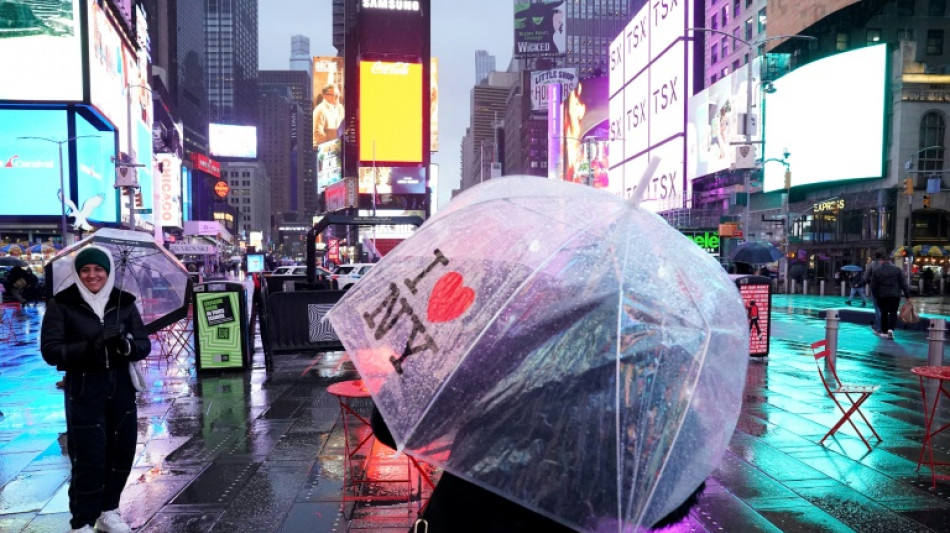
US braces for major storm, hundreds of thousands without power

A major storm system was battering parts of the United States on Tuesday, spinning off tornadoes in the south as forecasters warned of high winds and blizzards in the north, with hundreds of thousands of people losing power.
Heavy rain leading to flash flooding, severe winds gusting in places to more than 50 miles per hour (80 kph), and thunderstorms were predicted from the "western Carolinas to the Mid-Atlantic and Northeast," the National Weather Service said.
"Do not underestimate this one," warned New Jersey governor Phil Murphy in an interview with local media, predicting the worst of the weather would arrive there by later Tuesday and overnight.
He described the storm as "unusual," citing up to four inches of rain in January and high winds gusting along the shoreline.
Tornadoes were predicted in the southeast, with some already ripping through the Florida panhandle, where drone images showed downed trees and damaged buildings with roofs torn off.
Florida Governor Ron DeSantis, a Republican presidential candidate, issued a state of emergency across 49 counties.
More than 380,000 customers had already lost power in the United States by Tuesday afternoon, mainly in the southeast, according to monitoring website Poweroutage.us.
Wintry precipitation around the system would also lead to heavy snow in parts of the upper Midwest and the Great Lakes region, the weather service said.
In the northwest, the first blizzard warnings in a decade were issued for the Cascade and Olympic mountains, according to the New York Times.
The weather was already having a heavy impact on flights, with more than 900 cancelled and 5,300 delayed in the United States on Tuesday, monitoring website FlightAware.com reported.
Some of the cancellations were due to the grounding of some Boeing 737 MAX jets for inspection after a panel ripped off an Alaska Airlines plane mid-flight last week.
Scientists say that as humanity continues to warm the planet by burning fossil fuels, weather patterns will become more unpredictable.
That will mean wetter and more powerful storms, along with hotter, drier periods that will strain our water resources.
A. Walsh--BTZ

 London
London

 Manchester
Manchester
 Glasgow
Glasgow
 Dublin
Dublin
 Belfast
Belfast
 Washington
Washington
 Denver
Denver
 Atlanta
Atlanta
 Dallas
Dallas
 Houston Texas
Houston Texas
 New Orleans
New Orleans
 El Paso
El Paso
 Phoenix
Phoenix
 Los Angeles
Los Angeles



